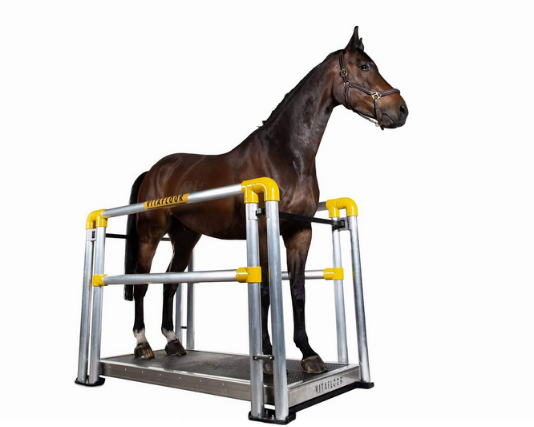Whole-Body Horse Vibration Therapy For Horse Backed By Science

One of the most effective healing techniques in the equestrian’s “toolbox” is whole-body vibration (WBV) therapy. According to research, a vibration plate with stand works to improve circulation and muscle contraction, which strengthens the body’s self-healing capacity. Regular vibration treatment sessions also improve performance and reduce the risk of injury in horses.
What Is Whole Body Vibration Therapy?
Whole-body vibration therapy uses a large vibrating platform. The platform, on which the horse is standing, vibrates at different frequencies (cycles per second) and magnitudes (up and down motion). A normal session would last 20 minutes at frequencies between 30 and 50 Hz, with the user controlling the frequency and setting a timer.
History of Whole-Body Vibration Therapy
Vibration therapy’s advantages have been recognised for decades. More than a century ago, breakfast cereal inventor Dr. John Harvey Kellogg created the first standing vibration plate for people. He thought vibration treatment could help with issues like headaches, constipation, and back discomfort by promoting the body’s natural healing processes.
The 1960s saw a significant increase in the use of vibration therapy. At that point, NASA researchers started looking into how well it worked to prevent muscular weakening and bone loss in astronauts living in zero gravity.
Whole-body vibration therapy has been shown in human trials to enhance muscle mass, improve circulation, reduce back and joint pain, reduce stress, improve bone density, and raise metabolism. Although there isn’t as much research on horses, there is strong evidence that vibration therapy benefits them as well.
Benefits of Horse Vibration Plates:
Horse vibration plates have the following known benefits:
- 1. Growth of the back muscles
In one study, nine horses between the ages of nine and eighteen received whole-body vibration therapy twice daily for thirty minutes, five days a week, for sixty days. Significant increases in the multifidus muscle’s size and symmetry were visible on ultrasounds. This crucial deep back muscle supports healthy posture, mobility, and balance by stabilising the spine. Maintaining a robust multifidus can reduce back pain and avoid or postpone lameness.
- Development of the hoof
In research with 10 horses, horses that received whole-body vibration (WBV) twice daily for 30 minutes every day for 60 days showed notable increases in hoof development rates in the first 30 days of treatment.
- Healing of the ligaments
Injuries to the ligaments and tendons must be treated carefully. The majority of horses with these injuries receive very little activity. WBV therapy speeds up the healing process, improves the quality of the repaired tissue, and stimulates tendons and ligaments without the negative effects of trotting or cantering.
- Pain and stress alleviation
A study says horses may experience pain relief and a relaxing impact from vibration therapy. According to a Michigan State University study, horses receiving whole-body vibration therapy seemed to calm down after each session, whereas control horses showed signs of restlessness. Similarly, a Middle Tennessee State University study discovered that horses receiving WBV therapy had lower heart rates, which may indicate that the treatment eased the animals’ discomfort.
- Chronic immobility
Eight horses with both chronic and current lameness participated in a study at the Peninsula Equine Medical Centre in Menlo Park, California. For 30 days, each horse received WBV twice daily for 30 minutes each time on a vibrating platform. During the first 30 days of WBV therapy, horses’ stride length and chronic lameness improved.
- Reduced amounts of cortisol
When compared to six stalled horses, six horses that received equine vibration treatment for 45 minutes, five days a week, at 50 Hz, had lower cortisol levels and a lower heart rate.





